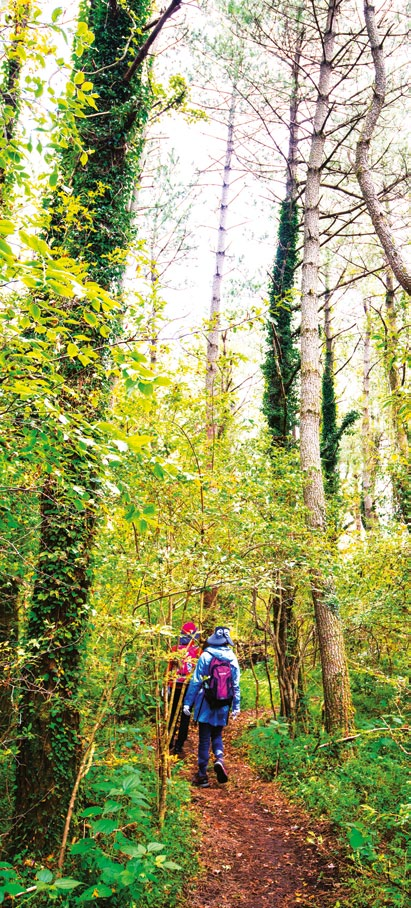Set your soul at ease by going on a leisurely trek down one of Jeju Island’s many forest trails.


Set your soul at ease by going on a leisurely trek down one of Jeju Island’s many forest trails.

Saryeoni Forest Trail
The Saryeoni Forest Trail has lots of man-made paths, so you’ll never get lost, or step into a pothole. And as this is a high-altitude trail, the weather is cool so you won’t break into a sweat as you check out over 250 types of trees, including cedar, cypress and fir.
Bijarim Forest
Home to over 2,800 nutmeg trees that are between 500 to 800 years old, Bijarim Forest is the largest nutmeg tree forest in the world, and is evergreen all year round. The evergreen trees emit an antimicrobial compound called Phytoncides, which is said to strengthen the immune system and improve the healing abilities of the body. What’s more, nutmeg oil is said to repel insects, so you don’t have to worry about bites.
Gotjawal
Gotjawal is a natural forest located on the middle slopes of Hallasan. The Gotjawal Hwansang Forest Trail is less than a kilometer long and will only take 50 minutes to complete, so it’s great for beginner trekkers. The mountain is cool in the summer, yet stays warm during winter, making it the perfect forest to head to all year round.

Slow down – you are about to enter a stress-free zone filled with camellia flowers.
Camellia Hill
Located on the southern slopes of Hallasan, Camellia Hill is a tranquil arboretum that has over 6,000 camellia trees of 500 different species from all over the world. And each season, you’ll be able to see various kinds of flowers blooming – even in severe winters.
The scent of camellias is known to put people in a relaxed, comfortable state. So take in the sweet, musky fragrances of the camellia when you take a walk through the many trails available in the park, and leave your worries behind. And, camellias are more than just beautiful and fragrant. In the past, the seeds were used to make hair oil and as a fuel-source for lamps, and the petals were used to treat various skin conditions and also make tea. Learn about the uses at the galleries and multipurpose rooms where they hold seminars and exhibitions, or stop by the cafe to get a taste of camellia tea.
If you want to take your eco-holiday one step further and immerse your mind, body and soul in nature, there is also accomodation available. Choose to sleep at a mokjobyeoljang, a wooden cabin made from yellow pine trees, or a chogajip, a traditional hay house, where you can relax and meditate.























